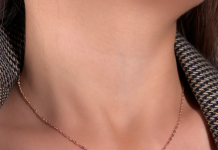Aloe vera gel and targeted hair growth oil are two exceptional natural remedies that provide complementary benefits for scalp and hair vitality. Used together, aloe and growth oils nourish, condition, stimulate circulation, prevent thinning, and encourage thicker, shinier, more vibrant locks.
This comprehensive guide will teach you everything you need to know about harnessing aloe vera and hair growth oils as part of your hair care regimen. Learn about the science, traditional uses, extraction methods, usage and safety tips, complementary ingredients, DIY recipes, and FAQs to properly utilize aloe gel and growth oils. Get ready to unlock your healthiest hair yet!
Chapter 1: The Origins and History of Using Aloe Vera on Hair
Aloe vera gel is derived from the spiky, succulent leaves of the aloe barbadensis plant native to North Africa. Egyptian queens like Cleopatra prized aloe as part of their beauty routines, believing it protected and enhanced their skin and hair.
References to aloe for medicinal purposes date all the way back to ancient Mesopotamia in the Sumerian clay tables circa 2100 BC. Traditional Chinese medicine and Ayurveda relied on aloe to treat wounds, burns, and skin conditions.
Rich in hydrating polysaccharides, enzymes, vitamins, and minerals, aloe vera gel has both cosmetic and therapeutic uses when applied topically. It penetrates hair strands to provide nourishing, conditioning, and protective benefits. Using aloe on hair leaves it looking smooth, strong, and revived.
Chapter 2: The Key Nutrients in Aloe Vera Gel for Hair
Here’s a closer look at the main nutrients and compounds that make aloe vera so beneficial for scalp and hair health:
– Vitamin A – helps produce healthy sebum to moisturize scalp and strands
– Vitamin B12 – stimulates new hair growth
– Vitamin C – antioxidant that strengthens collagen in hair
– Vitamin E – repairs damage and increases circulation
– Proteolytic enzymes – gently exfoliate dead skin cells and product buildup
– Polysaccharides – provide hydrating, conditioning, and cleansing benefits
– Auxins and gibberellins – encourage hair growth by stimulating follicles
With this powerhouse lineup of vitamins, minerals, and compounds, it’s clear why aloe vera has earned its hair hero reputation after centuries of traditional use.
Chapter 3: How Aloe Vera Leaf Gel is Harvested
To make aloe vera gel, the thick leaves are cut from the plant and the outer rind peeled away to extract the clear inner leaf gel. This occurs when the plant is between 3-5 years old.
Aloe leaves consist of three layers:
- Protective green rind
- Bitter yellow sap called latex containing aloin
- Inner clear gel with all the nutrients
To avoid contamination from the laxative aloin-rich yellow sap layer, it must be carefully removed during processing.
Quality is key when selecting aloe gels. The label should state 100% pure inner leaf gel. Organic, cold-pressed, and additive-free aloe gel provides the highest nutrient content.
Chapter 4: Using Pure Aloe Vera Gel on Hair
When used regularly, pure aloe vera gel provides these beautifying hair benefits:
– Deeply conditions – leaves hair soft and smooth
– Imparts shine – seals cuticles flat for light reflection
– Detangles – allows easy combing and styling
– Defines curls – provides hold and enhances bounce
– Soothes itchy scalp – hydrating, anti-inflammatory properties
– Prevents dandruff – antimicrobial action fights fungal overgrowth
– Stimulates growth – contains plant hormones that prolong anagen phase
– Protects color – forms protective coating to prevent fading
Here are some tips for properly using aloe gel in your hair routine:
– Scoop fresh aloe gel from an opened leaf or use bottled gel.
– Rub gel between palms and smooth through damp or dry hair.
– For deeper penetration, apply to roots first then work towards ends.
– Let sit for 20-30 minutes before rinsing out thoroughly.
– Use aloe gel on hair a few times per week for best results.
Chapter 5: Making DIY Aloe Vera Gel Hair Masks and Treatments
One of the easiest ways to gain the benefits of aloe for hair is by blending it with other nourishing ingredients to makemasks. Try these recipes:
Intensive Hydrating Hair Mask
– 1/4 cup aloe vera gel
– 1 banana, mashed
– 1 tablespoon olive oil
– 1 teaspoon honey
Combine ingredients, apply evenly to damp hair, and allow to penetrate for 30 minutes before rinsing out thoroughly with cool water.
Soothing Dry Scalp Treatment
– 1/4 cup aloe vera gel
– 3 drops tea tree essential oil
– 2 drops rosemary essential oil
– 2 tablespoons yogurt
Whisk ingredients together and massage into clean, damp scalp. Leave on for 20 minutes before shampooing as usual.
Detoxifying Hair Rinse
– 1/2 cup aloe vera gel
– Juice of 1 lemon
– 10 drops cedarwood essential oil
– 5 drops lavender essential oil
Shake or blend to mix. Pour over hair after shampooing and let sit 5 minutes before rinsing clean.
Chapter 6: Complementary Herbal Oils for Aloe Vera Hair Recipes
To enhance aloe vera gel’s nourishing effects even further, you can combine it with complementary herbal oils like:
– Coconut oil – penetrates hair shaft to reduce protein loss and hydrate strands.
– Olive oil – coats hair to prevent moisture loss and smooth down cuticles.
– Jojoba oil – mimics natural sebum so scalp produces less oil over time.
– Argan oil – repairs damage from styling while taming frizz and adding shine.
– Avocado oil – rich in vitamins and fatty acids that protect hair and scalp.
– Sweet almond oil – softens hair and provides vitamin E to nourish strands.
These oils provide lightweight hydration and smoothing effects that boost aloe vera’s abilities to revive dry, damaged hair.
Chapter 7: The Origins of Herbal Hair Growth Oils
In addition to aloe vera, natural herbal hair growth oils have been prized since ancient times for their abilities to strengthen strands, prevent thinning, and stimulate growth.
Oils like coconut, castor, olive, cedarwood, rosemary, lavender, and peppermint have been a mainstay of Ayurvedic and traditional Chinese medicine hair treatments for centuries.
Egyptian and Roman texts reference herbal scalp massage oils to promote faster, thicker hair growth and prevent male pattern baldness. These traditional remedies are still potent today.
When massaged into the scalp, hair growth oils improve circulation and follicular health to wake up dormant follicles and nourish new growth. Here’s how they work their magic:
Chapter 8: How Hair Growth Oils Stimulate Follicles
Here are the main mechanisms by which natural hair growth oils spur new growth by targeting the scalp:
– Improved circulation – more nutrients reach follicles to encourage growth.
– Sebum regulation – balances oily or dry scalp conditions for optimal growth environment.
– Hormone stimulation – some oils mimic hormones that initiate growth phase.
– Unblocked follicles – removes product buildup and dead skin from pores.
– DHT inhibition – some oils block DHT implicated in male/female pattern baldness.
– Reduced inflammation – scalp is soothed allowing growth to occur.
– Microbial balance – some oils have antimicrobial effects to prevent infections.
The right oil blend keeps scalps balanced and primed for new growth. Now let’s go over some top oil choices.
Chapter 9: Best Herbal Hair Growth Oils
Here are some of the best hair growth oils to incorporate into your scalp massage routine:
– Castor oil – ricinoleic fatty acid nourishes follicles and improves circulation. Also increases thickness.
– Peppermint oil – stimulates and oxygenates follicles through increased blood flow. Provides tingling sensation.
– Rosemary oil – antiseptic oil that removes blockages around pores and provides folate to follicles.
– Cedarwood oil – balances sebum, has anti-inflammatory properties, and reduces hair loss. Adds thickness.
– Tea tree oil – antimicrobial, anti-fungal, and antiviral oil that prevents infections and unclogs pores.
– Coconut oil – improves scalp health, has cooling properties, and penetrates to protect strands from damage.
– Lavender oil – soothes irritation and inflammation while balancing sebum and boosting circulation.
– Jojoba oil – hydrates hair and balances excess sebum production which can slow growth.
Chapter 10: Using Herbal Hair Growth Oils Properly
To harness hair growth oils properly, follow these tips:
– Always mix growth oils with a carrier oil like coconut, olive, or almond oil before applying.
– Perform a patch test before initial use to prevent reactions.
– Heat oils slightly to thin viscosity and improve absorption.
– Massage oils into scalp using fingernails before wash day.
– Let sit 30 mins minimum before shampooing out thoroughly.
– Use consistently 1-2 times per week for at least 2 months.
– Store in dark bottles in cool area to prevent oxidation. Shelf life is 1-2 years.
Be patient when using growth oils. Combine with a healthy hair regimen to see thickness and increased growth over time. Monitor for irritation.
Chapter 11: Making DIY Hair Growth Oil Recipes
One of the easiest ways to harness hair growth oils is by blending them into stimulating scalp massage oil recipes like:
Invigorating Scalp Massage Oil Blend:
2 tablespoons castor oil
2 tablespoons sweet almond oil
5 drops rosemary essential oil
5 drops peppermint essential oil
2 drops eucalyptus essential oil
Combine oils in a bottle and shake before each use to disperse the essential oils. Massage into scalp and let sit for 30-60 minutes before washing out.
Dandruff and Growth Oil:
3 tablespoons coconut oil
2 tablespoons olive oil
3 drops cedarwood oil
3 drops tea tree oil
2 drops thyme oil
1 drop rosemary oil
Mix the ingredients together and apply to the scalp, massaging gently with fingertips for 2-3 minutes before rinsing thoroughly.
Thickening Hair Oil:
1 tablespoon castor oil
1 tablespoon grapeseed oil
2 drops cedarwood essential oil
2 drops thyme essential oil
1 drop rosemary essential oil
Shake the oil blend before applying and massaging into scalp. Leave on for 1 hour or more before shampooing as normal.
Chapter 12: Combining Aloe and Herbal Oils for Healthy Hair
Now that you understand aloe vera gel and hair growth oils separately, let’s discuss combining them to take advantage of their complementary benefits:
– Aloe conditions, detangles, and smoothes hair while oils strengthen strands and stimulate follicles.
– The gel and oils penetrate to different depths – aloe on the surface and oils down to the roots.
– Aloe cleanses and removes buildup while oils unclog blocked follicles and nourish them.
– Light aloe won’t weigh fine hair down while rich oils add thickness.
– The antimicrobial and anti-inflammatory properties balance the scalp environment.
Try alternating the use of aloe-based hair masks followed by oil-infused scalp massages to notice fuller, thicker, shinier locks. Your hair will thank you!
Chapter 13: Additional Tips for Using Aloe and Herbal Oils on Hair
Follow these tips to use aloe vera gel and hair growth oils properly and effectively:
– Perform a patch test before initial use of new aloe gels or oils to check for allergic reactions.
– Introduce new ingredients one at a time to determine hair’s reaction.
– Use caution when using oils on color treated or keratin straightened hair.
– Apply aloe gel lightly focusing just on the hair, not directly on the scalp.
– Rinse out aloe gel and oils very thoroughly to prevent residue buildup.
– Adjust amounts and frequency based on your hair’s porosity and oiliness.
– Give the ingredients 2-3 months to notice a real difference from consistent use.
Now you can unlock your hair’s health, shine, and growth potential with the time-tested benefits of aloe vera gel and herbal hair growth oils! Follow these tips to use them successfully as part of your hair care regimen.



























